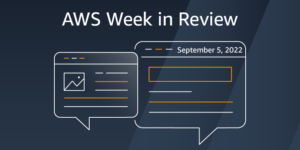
Microsoft recently decided to stop offering its free solution for handling tenant-to-tenant migrations. Now, users must purchase a $12 license for every mailbox if either of the tenants has an Enterprise Agreement.
Following this policy update, in-house IT teams and managed service providers are likely looking to understand how to select the best migration tool for their organization. With a wide range of free and paid solutions on the market, there are several important factors IT leaders should consider when evaluating migration tools.
Overall User Friendliness
The old saying “you get what you pay for” definitely applies to the landscape of free and paid data and mailbox migration tools. Free solutions often lack enhanced interfaces and advanced automation features that their paid counterparts include. By contrast, paid services tend to have a more developed user experience that makes using the tool more intuitive and accessible, with thoughtful enhancements that can ensure the process is seamless and less time-intensive.
While user experience might not always be top-of-mind as IT staff are considering different migration solutions, it’s worth noting that a tool’s ease of use can impact how quickly an IT professional grasps the solution’s functionality and makes the most of the solution’s capabilities.
Status and Error Reporting
Any IT leader who has conducted a migration knows that the process will almost never be totally error-free. IT teams should expect that problems will arise during the process. When a migration throws an error, you need reliable and precise reporting to determine the source of the problem without having to do much digging. Rapid access to critical data and information is essential to a smooth and seamless migration that keeps the migration on schedule.
The ability to narrow down an issue to the individual item level (especially when handling high user counts or environments with strict compliance requirements) is commonly included in third-party migration solutions, but may not be available in free alternatives.
Configuration and Execution
Configuring a migration tool is just one part of the overall process. Understanding the legwork involved in the setup and execution time of free versus paid tools can help organizations compare and contrast different first- or third-party solutions. Conducting a proof-of-concept with a small test group is a great way to find out the performance and configuration time needed to complete the migration at scale. Using this testing approach, the team can compare free and paid tools to gauge setup and performance metrics before committing to one tool or another.
Scalability
The time it takes to complete a migration depends on the type and size of data that needs to be moved, along with other factors such as available bandwidth, throttling and destination environment. Free solutions might be the right choice for smaller, straightforward migrations that don’t need to handle a large amount of data—usually in the 100-200 seat range. Complex or data-heavy migrations will likely be handled more effectively and efficiently with a paid tool since they’re capable of scaling to sustain thousands of users and migrate data from multiple users at once.
Free tools are also not equipped to allow a customized migration approach, such as a pre-stage migration. Using a pre-staging approach to migrate mailboxes is one of the most common methods of handling email migrations. With pre-staging, most of the user data is migrated behind the scenes before the MX record cutover. Pre-staging frees up the bandwidth needed during the time of cutover and reduces downtime during larger migration projects. Since first-party solutions may not support this option, they might not be the right choice for large-scale migrations.
Total Cost
Free migration solutions can feel like a win for the bottom line, but it’s important to be mindful of the opportunity cost of the IT team’s time in the total cost equation. If a free tool is used for a more complex migration, the process could take significant time to complete and might require deeper troubleshooting if errors occur and IT staff need to dig deep to diagnose the issue.
While the solution itself may not come with a price tag, there may be licensing, hardware, and engineering costs that end up eating into the money “saved” with a free tool. Looking beyond the surface-level costs of free versus paid tools can reveal hidden costs and hassles that make first-party options more trouble than they’re worth.
Vendor Support
Having the right support throughout the migration process can make or break the project’s success—and levels of support vary widely between free and paid migration tools. Most errors that arise during a migration are relatively innocuous and easy to solve. In the event that something goes really wrong, having robust support available is essential to getting back on track.
One issue with using a first-party migration tool is that you’re tied to a behemoth vendor for help with your unique migration. Since the vendor is providing a free tool, they aren’t going to offer comprehensive support that you’d get with a paid option. On top of support limitations, online documentation and training resources with first-party vendors are often less than robust too, leaving you with limited options for getting the critical help you need.
Free migration tools don’t need to be avoided altogether, but they probably won’t meet the needs of every organization or migration project. As IT leaders and MSPs begin shopping for migration solutions, they should carefully consider the size and scope of their project and weigh the pros and cons of choosing a first-party tool or whether a more resource-rich third-party option will suit their needs best. With the right migration solution, organizations will save time, money, resources and access the reporting and support that could make all the difference.
By Stacey Farrar


